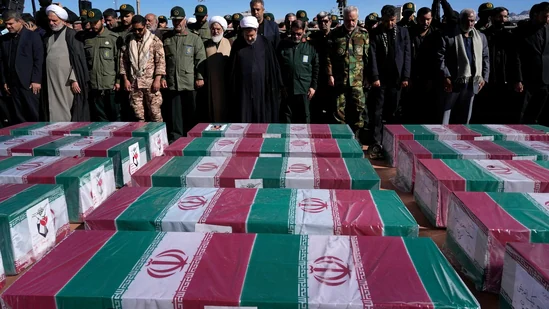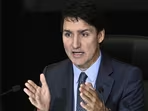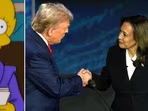Sectarian flames in West Asia’s furnace: Why did the Islamic State attack Iran?
January 3 marked three years to an air strike authorised by former United States president Donald Trump, which killed the Iranian Major General Qassem Soleimani, chief of the Quds Force of the Islamic Revolutionary Guard Corps, who was in Iraq at the time. During a commemorative gathering for the fallen general in Kerman, Iran, a suicide bombing killed 84 people and injured several more last week. The Islamic State (IS formerly ISIS) took responsibility for what is one of the worst attacks in post-1979 Iran, by casualty count alone.
 PREMIUM
PREMIUM Why is IS at war with Iran?
Post 9/11, Iran under the reform-minded President Mohammad Khatami effectively allied with the United States against the Taliban and other jihadist groups in Afghanistan. Even as differences between Washington and Tehran morphed into adversity, the Islamic Republic’s fight against these groups almost invariably found common targets with the United States. However, unlike the latter, which embarked on its war on terror following 9/11, Shia Iran’s fight against jihadist groups had a longer history — both before and after they morphed into the Islamic State, these groups bore a militant aversion to minority Shia Muslims, considered heretical apostates by Salafi and Sunni orthodoxy.
Consequently, as IS evolved into a militarily potent territory-seeking caliphate-aspiring force that tore through Iraq and Syria starting in early 2014, Iran was harder pressed to respond to the threat long before Washington was drawn into the war. The urgency was created by the imminent threat to Shi’ism’s holiest sites in Karbala and Najaf in Iraq, as well as the increasing proximity of the war to Iran’s own borders.
Although Iran-backed forces have perpetrated several crimes against Iraqi Sunnis in the past, IS displayed its sectarian ruthlessness in massacres like that of Camp Speicher in 2014 where it murdered between 1,500 and 1,700 unarmed cadets of the Iraqi Army, most of whom were Shia recruits separated from Sunni cadets (one of the worst acts of terror following 9/11).
Notwithstanding the Byzantine complexities of the Syrian civil war, just as the US-led coalition, along with local Kurdish allies, fought IS from the air, Iran’s IRGC and its Quds Force headed by Gen Soleimani weaved together new Shia (and some Sunni) resistance groups to back the Iraqi Army and fight IS. By the time the IS capitulated in 2019 at Baghuz Fawqani, Iran and its famed general were already the principal adversaries for whatever fighters remained of the Islamic State.
Target on the back
As IS morphed into a more traditional terror group that acted through low-cost high-value suicide attacks in urban areas, Iranian cities and towns were prime targets, leading to a string of bombings and shootings between 2016 and 2023, including an attack on Iran’s Parliament and Ayatollah Khomeini’s mausoleum off Tehran in 2017.
Essentially, two factors continued to inform IS' hostility to Iran — its pre-existing ideological commitment to killing apostate Shias, now supplemented by a martial commitment to inflicting a thousand cuts on an enemy that was significantly responsible for the loss of the caliphate that they sought to establish.
It is also this combination of factors which distinguishes IS from other largely Sunni militant groups such as Hamas, which have long enjoyed Iranian support. Hamas’ single-point focus on resisting the Israeli occupation through militant means aligns it with Tehran’s anti-Israel goals in the region. Though both Hamas and IS are majorly Sunni in composition, IS is set apart by its support for Salafism, which seeks a more radical revival of orthodox Sunni Islam. In fact, IS publicly denounced Hamas in 2015, given its alignment with Iran. This distinction re-emerged as a clarification in popular discourse after Benjamin Netanyahu, Israel’s prime minister, called Hamas “Hamas-ISIS” after its October 7, 2023 terror attack on the country.
An overlooked aspect
It is easy to get lost in the current fog of the larger ongoing West Asian crisis. Most news reports, not necessarily wrongly, hook the Kerman attack with Israel’s war in Gaza, the Houthi Red Sea campaign, and the Iran-US proxy war in Iraq. However, the Kerman attack is proof of an older Iranian worry — more concrete since August 2021 — that the Taliban’s return will infuse anti-Shia groups in Afghanistan with new energy. US intelligence officials, according to Reuters, said that the attacks were perpetrated by ISIS-Khorasan, the Afghanistan chapter of the group where the locus of decision-making has largely shifted — and which has issued repeated threats to Iran before major IS attacks, such as at the Shah Cheragh shrine in 2018.
After the 2020 Doha Agreement between the United States and the Taliban, even as the latter was making numerous assurances to Pakistan on the Durand Line (located at the Afghanistan-Pakistan border) and to the West on women’s rights, Tehran sought to gain its own assurances that the group did not harbour anti-Shia militants in Afghanistan. The Taliban has, thus far, reneged on all fronts. Particularly, its failure to mount an effective counter to ISIS-K and anti-Shia attacks has more than once drawn criticism and concern from Tehran, even as ISIS-K publicly declared in October 2021 that it would target Shia Muslims globally, after attacking an Afghan Shia mosque, killing 47. Hence, even as Iran continues the good cop approach to the Taliban today, the Kerman attack is likely to divert the Quds Force’s resources, should Kabul persist in its ineffectiveness.
Bashir Ali Abbas is a Research Associate at the Council for Strategic and Defense Research, New Delhi, and a South Asia Visiting Fellow at the Stimson Center, Washington DC. Views expressed are strictly his own.
Continue reading with HT Premium Subscription
Daily E Paper I Premium Articles I Brunch E Magazine I Daily Infographics Subscribe Now @1199/year Already Subscribed? Sign In Share this article Share Via Copy Link
Share this article Share Via Copy Link - Donald Trump
-
 Iran
Iran - Islamic State
- Qassem Soleimani
- Air Strike
Disclaimer: The copyright of this article belongs to the original author. Reposting this article is solely for the purpose of information dissemination and does not constitute any investment advice. If there is any infringement, please contact us immediately. We will make corrections or deletions as necessary. Thank you.
Title:Sectarian flames in West Asia’s furnace: Why did the Islamic State attack Iran?
Url:https://www.investsfocus.com









